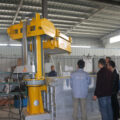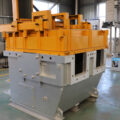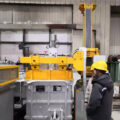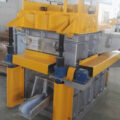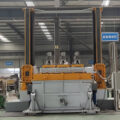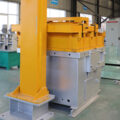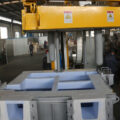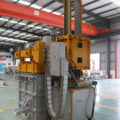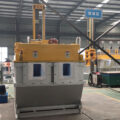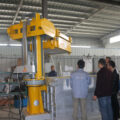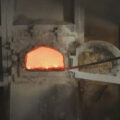The online degassing system features a complete degassing rotating device, which can degas molten metal, especially molten aluminum. Inject inert gas into the metal surface to maximize efficiency and help reduce emissions. The rotating device is completely immersed in the molten aluminum to maximize the stirring effect while providing effective degassing for metal cleaning.

Melting casting is the first process of aluminum processing. If there are pores caused by casting in the billet, no matter what advanced technology or equipment, it will not be able to make up for this congenital defect in the subsequent series of processing, and it will be difficult to guarantee the quality of aluminum products. And performance. Therefore, in order to give full play to the potential of the material and give full play to its own performance, the production and quality control of the cast slab must be solved first.
The main source of hydrogen in the aluminum alloy melt is that during the aluminum alloy smelting process, the moisture in the atmosphere and on the surface of the raw material enters the alloy melt through metallurgical reactions, causing the melt to absorb hydrogen. There are two forms of its existence in molten aluminum. About 90% of the hydrogen is dissolved in the melt in the state of interstitial atoms; and a small part of about 10% of the hydrogen is adsorbed on the surface of the inclusion in the form of bubbles, forming hydrogen bubbles.
The presence of hydrogen will adversely affect the performance of aluminum alloys. The hydrogen in aluminum and its alloys will produce pores of different sizes in the casting billet, which will destroy the continuity of the metal material and reduce the effective cross-section of the component. At the same time, stress concentration is caused around the pores, which greatly reduces the processing performance of the cast slab. In semi-finished products, delamination defects caused by hydrogen and the second type of hydrogen embrittlement will occur, which increases the brittleness of the alloy during forging and rolling. The hydrogen in the slab in the supersaturated state and the combined state is an important reason for the secondary porosity and surface blistering of the slab in the homogenization process.
The basic method of degassing rotating device is the bubble floatation method. The degassing principle is to pass gas or gas-generating substances into the aluminum melt to generate bubbles. According to the principle of partial pressure difference, the hydrogen dissolved in the aluminum melt is under the action of the pressure difference. , Continue to diffuse into the bubble, when the bubble rises to the surface, the hydrogen diffused into the bubble enters the atmosphere with the bubble. At the same time, the surface of the bubble can automatically adsorb inclusions, and the inclusions are discharged to the liquid surface as the bubbles float to form slag.

